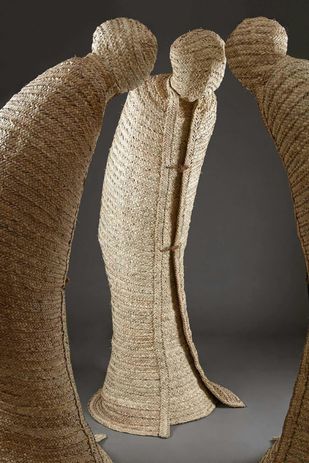|
Ahmed Askalany
Askalany’s work shows an explicit connection with traditional materials and craft methods associated with the ancient cultures of Egypt. Characteristic of Askalany’s works are the aesthetic forms that place an emphasis on both structure and volume, as well as an innocent sense of isolation that reflects frankness, candour and a poetic sensitivity. Inspired by the basket weaving technique practiced in his native town in Upper Egypt, Askalany's renowned palm leaves sculptures renew this ancient practice. Aiming to represent his people’s virtues of innocence and goodness, he produces simple and elegant human figures with natural coloured palm leaves. By doing so, Askalany’s work challenges the very boundaries associated with the notion of what is perceived as crafts and the arts, and manages to respond and contribute to the complexity of contemporary artistic practice. Born in 1978 in Nag Hammadi, Upper Egypt, Ahmed Askalany currently lives and works in Cairo. His works, produced with simple techniques, show an explicit connection with traditional materials and craft methods associated with the ancient cultures of Egypt. Characteristic of Askalany’s works, whose subjects include human figures and animals inspired by his native town, are the aesthetic forms that place an emphasis on both structure and volume. Askalany’s work challenges the very boundaries associated with the notion of what is perceived as crafts and arts, and manages to respond and contribute to the complexity of contemporary artistic practice. Askalany participated in various important solo and group exhibitions worldwide such as Mashrabia Gallery, Cairo, Egypt; British Council, Cairo, Egypt; Le Parc de la Villette, Paris, France; The Arts academy, Rome, Italy; Holland Circle theatre, Netherland, the 4th Rome and Mediterranean countries Biennale, Sarajevo. Moreover, he represented Egypt at the 2009 Venice Biennale. |

